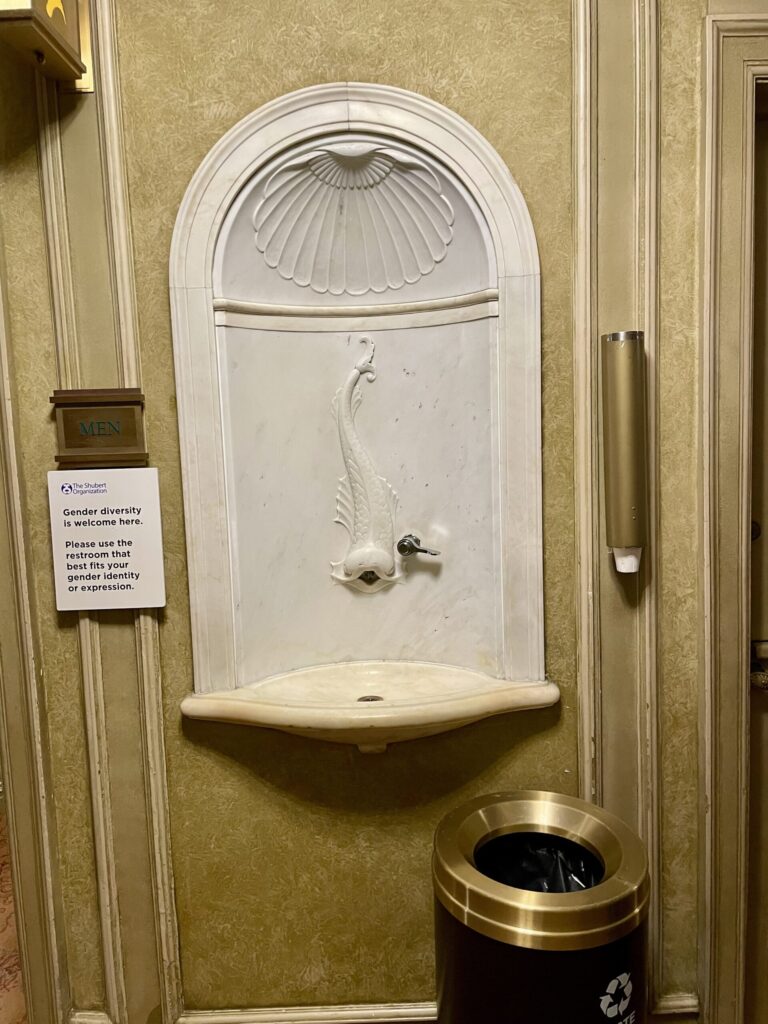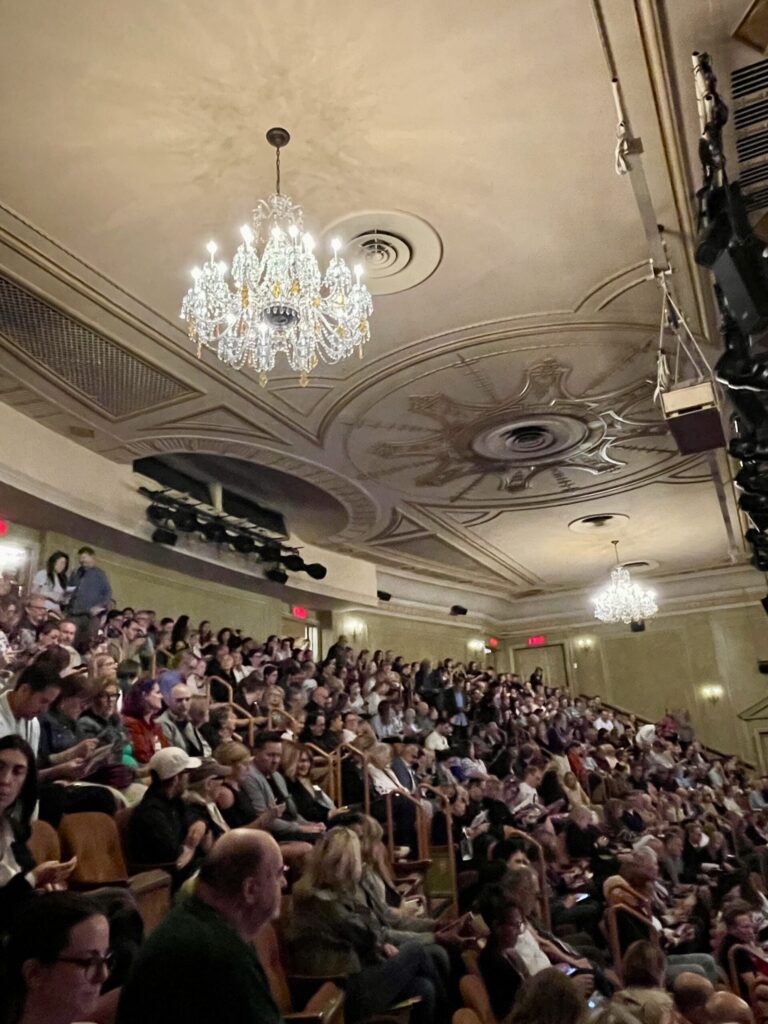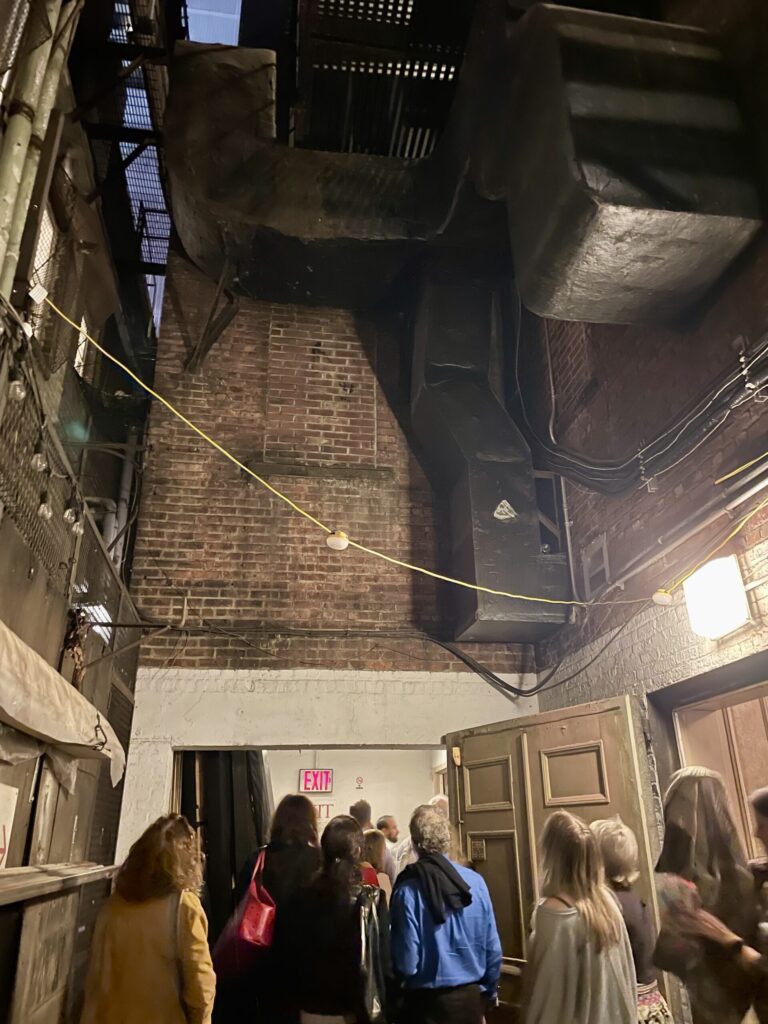Broadway is lined with theaters of varying scale, age, and character, but few can match the intimacy and charm of the Music Box Theatre. Tucked onto West 45th Street, just a few steps from Times Square, this 87-year-old house has long been a haven for plays that thrive on nuance and wit. With fewer than 1,000 seats, the Music Box (currently home to Art) offers a distinctly personal theatergoing experience, enhanced by its elegant 1920s design and a storied history tied to some of Broadway’s most distinguished names.
A Theatre Born from Collaboration
Designed by architects C. Howard Crane and E. George Kiehler, the theater was conceived as a jewel box—smaller, more intimate, and more refined than many of its neighbors. Its purpose was to host Berlin’s works, but it quickly became a home for some of the most sophisticated plays of the 20th century. Writers like George S. Kaufman, Moss Hart, and Noël Coward all had shows produced here.

The Music Box Theatre opened in 1921, born out of a collaboration between producer Sam H. Harris and celebrated Broadway composer Irving Berlin. Berlin, eager to stage a revue of his own songs, convinced Harris to build a theater specifically tailored for the production. The result was the Music Box Revue, which debuted in 1921 and ran for several successful seasons.
Over the decades, the Music Box became synonymous with prestige productions. Arthur Miller’s Death of a Salesman premiered here in 1949, cementing the venue’s status in Broadway history. In more recent years, the theater has continued to showcase both revivals and original works, including hits like Jerusalem and Dear Evan Hansen, the latter of which ran for over six years.
Architecture and Interior: A French-Style Jewel Box
While many Broadway houses boast ornate interiors designed to dazzle, the Music Box opted for a different sensibility. Its interior reflects the French neoclassical style popular in the early 1920s, with soft lines, gilded details, and an air of refinement.

The theater’s auditorium is intimate, with a capacity of just over 950 seats. This smaller size makes it particularly well-suited for plays and musicals that require close audience engagement. Unlike the cavernous houses built for large-scale musicals, the Music Box allows theatergoers to feel a direct connection with the actors on stage.
One of the most striking features of the Music Box is its chandeliers. Hanging from the softly arched ceiling, the chandeliers provide both a focal point and a warm golden glow that enhances the space’s elegance. Its design mirrors the theater’s overall decorative scheme—delicate, not ostentatious. The lighting fixtures’ crystal and metalwork create an atmosphere that feels timeless, a reminder of Broadway’s gilded past without overwhelming the audience in ornament.
The interior decorations continue this motif of refined simplicity. Pastel-colored walls, classical moldings, and carved plasterwork frame the proscenium. Subtle floral and geometric patterns accent the balconies and boxes, giving the house a graceful, symmetrical appearance. The décor has been carefully maintained and restored over the years, ensuring that the Music Box remains as visually appealing today as when it opened more than a century ago.
The Experience of Seeing a Show
Part of what makes the Music Box Theatre unique is how its design impacts the experience of seeing a show. With no seat far from the stage, audiences can easily appreciate the nuances of a performance, whether it’s a whispered aside or a powerful soliloquy.
The acoustics are excellent, carrying voices clearly without the need for amplification in earlier decades. Even today, when sound design is more elaborate, the natural intimacy of the house enhances a production’s impact. Many actors and directors have noted that the Music Box allows for a more subtle style of acting, something that can get lost in Broadway’s larger venues.
A Hidden Exit: The Alleyway Between Theatres

One of the quirks of attending a show at the Music Box Theatre comes not during the performance, but as you leave. The theater’s side exit doors funnel audiences into a narrow alleyway tucked between two buildings. Unlike the grand front entrance on West 45th Street, this passageway feels secretive, almost like slipping backstage into Broadway’s hidden architecture.
The alley, lined with brick and service doors, provides a shortcut to 44th or 46th Street, depending on which way you turn. Many longtime theatergoers note that stepping out into this dimly lit corridor is part of the charm of seeing a show here—it’s an unpolished glimpse of the gritty city behind the glamour. You may even find yourself shoulder-to-shoulder with cast members hurrying to dinner or with other audience members discussing the play they just saw.
It’s a reminder that Broadway, for all its glittering chandeliers and velvet curtains, is also made up of practical passages, service alleys, and hidden spaces. At the Music Box, that side exit is a small but memorable piece of the overall experience.
Location and How to Get There
The Music Box Theatre sits at 239 West 45th Street, right in the heart of the Theater District. Its central location makes it easily accessible from anywhere in New York City.
For those traveling by subway, the Times Square–42nd Street station is the most convenient hub, served by multiple lines including the N, Q, R, W, 1, 2, 3, A, C, and E trains. From the station, it’s just a short walk north to 45th Street. The 49th Street stop on the N, Q, R, and W lines and the 50th Street stop on the 1 line are also nearby.
If arriving by bus, several lines stop along 8th Avenue and 7th Avenue. Out-of-town visitors often arrive via the Port Authority Bus Terminal, only a ten-minute walk from the theater.
Driving to the area can be challenging given Midtown’s congestion, but parking garages are available on 44th and 46th Streets. Many theatergoers, however, prefer to take public transit to avoid traffic and parking fees.
A Legacy That Lives Outside of the Box
The Music Box Theatre remains a vital part of Broadway’s cultural fabric. While it was originally conceived as a showcase for Irving Berlin’s talents, it has grown into much more—a home for drama, comedy, and musicals that require a more intimate setting than Broadway’s grand palaces. Its French-style interior, graceful chandelier, and nearly century-old legacy make it one of the most beloved houses on Broadway.
For theatergoers seeking an experience that feels personal and steeped in history, the Music Box offers just that: a chance to step into a jewel box of Broadway, where the distance between performer and audience collapses, and where every word and note resonates deeply.
